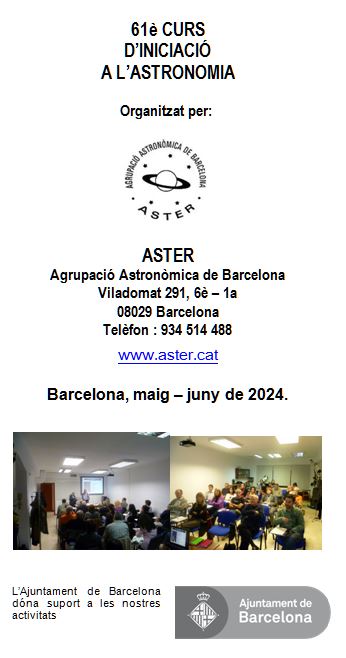
Més de 60 joves participen a la Ruta Catalana a Poblet
Més de 60 joves participen a la Ruta Catalana a Poblet



Més de 60 joves participen a la Ruta Catalana a Poblet
Guies i Scouts d’Europa a Catalunya és una associació de lleure educatiu que busca formar infants i joves a través del mètode scout i la fe cristiana
Una seixantena de joves han participat el cap de setmana del 22 al 25 de març de la vuitena edició de la ruta catalana de Guies i Scouts d’Europa al Monestir de Poblet. Es tracta de l’activitat principal que aquest moviment d’escoltisme catòlic i lleure educatiu ofereix als seus caps - joves de disset anys o més - durant el curs. Enguany, han estat quatre dies de ruta que han servit als participants per a preparar-se per a la Setmana Santa tot vivint un ambient de fraternitat i pregària.
Dividits en equips, scouts, guies i joves d’altres realitats eclesials han pogut viure de primera mà els elements propis de la ruta escolta, que busca transmetre als joves un esperit de servei a Déu i al Proïsme. Ho han fet amb la celebració diària de l’eucaristia, adoracions al Santíssim, la contemplació de la natura o les xerrades formatives de la mà dels consiliaris religiosos i caps scouts.
“La ruta sempre és un moment per viure en profunditat el mètode scout i desprendre’s de tot el que ens preocupa en el nostre dia a dia. Per això condem a tots els joves que vulguin viure aquest estil de vida”, explica Pau Artés, cap de branca vermella (la franja d’edat per a joves de 17 anys o més) i un dels organitzadors de l’esdeveniment d’enguany.
Els participants es van trobar divendres al vespre a Sarral, on van gaudir d’una vetllada festiva prèvia a l’inici de la ruta. Les vetllades són un moment lúdic i festiu amb cants, actuacions i jocs que serveixen per acabar qualsevol activitat scout de manera distesa. L’endemà, dissabte, va començar la ruta després la celebració de l’Eucaristia a l’Ermita dels Sants Metges.
Des d’allí, els equips van fer els seus respectius itineraris fins al refugi de Castellfollit i l’Ermita de la Pena. Durant el recorregut, com és habitual a les rutes scouts, va haver-hi temps per cuinar el dinar, pregar de manera individual i resar el rosari, a més de compartir unes hores de germanor i alegria amb els membres de l’equip. En arribar als llocs d’acampada, els participants van gaudir d’una xerrada formativa de la mà d’alguns dels caps de l’associació. En concret, van parlar sobre la progressió scout i el compromís de l’escoltisme en el servei a la societat. A la nit, va tenir lloc la segona vetllada festiva, aquest cop sobre la vida de Sant Francesc i Santa Clara d’Assís, escollits com els patrons de la Ruta Catalana 2024 pel seu exemple d’humilitat i senzillesa.
Diumenge, els equips van sortir ben aviat, a les vuit del matí, en ruta fins al Monestir de Poblet, a uns 16 quilòmetres de distància d’on havien acampat. Allà, després de tota la jornada, van celebrar la festivitat de diumenge de Rams, amb una gran processó fins a la capella de Sant Jordi, on el conciliari de l’associació Mn. Fernando Gilabert va presidir l’eucaristia.
Després de sopar, va tenir lloc un dels moments més importants de la ruta, una vetlla d’adoració per pregar per les persones membres de l’associació que l’endemà farien un pas endavant en la seva progressió scout pronunciant la seva Promesa. A la vetlla, així com a les eucaristies, hi va participar una part del Cor de Guies i Scouts d’Europa, present a la majoria d’activitats de l’associació. En acabar, va tenir lloc una xocolatada que va servir per compartir totes les experiències viscudes a la ruta.
Diumenge, scouts i guies van poder celebrar la Missa i els Laudes amb els monjos de Poblet, que els van fer una visita guiada pel monestir. A continuació van tenir lloc les cerimònies de promesa. Amb aquest acte, un scout promet “servir el millor possible a Déu, a l’Església i a Europa, complint sempre la llei scout”. D’aquesta manera, l’escoltisme busca formar joves compromesos i compromeses en la seva fe i en l’entrega cap als altres.
Sobre l’organització
Guies i Scouts d'Europa és un moviment d'escoltisme catòlic present a 24 països que busca el creixement integral d’infants i joves a través del mètode scout i la formació cristiana. El moviment, també conegut com a Federació d’Escoltisme Europeu (UIGSE-FSE), està reconegut com una associació internacional de fidels de dret pontifici per la Santa Seu.
A Catalunya, Guies i Scouts d’Europa té presència activa a Barcelona, Sant Feliu de Llobregat, Igualada, Manresa i Sant Celoni. Ho fa a través d’agrupaments instaurats a parròquies que posen a disposició de famílies i joves l’escoltisme inspirat en el mètode de Robert Baden Powell i mossèn Antoni Batlle.
.jpg)
Memòria del Curs 2022-2023
Us infomem que ja hi ha disponible la Memòria del Curs 2022 - 2023 on podreu consultar tots els actes que hem realitzat al llarg del curs així com altres temes d'interès.
Podeu consultar el document clicant a la imatge inferior..jpg)

EL CJNC celebra la seva primera trobada de Setmana Santa
Aquest cap de setmana ha arrancat el primer encontre de Setmana Santa del Cor Jove Nacional de Catalunya, una nova cita anual en el calendari d’aquesta formació coral d’alt nivell, que fins ara només es reunia a l’estiu, que permetrà donar més continuïtat al projecte formatiu.
Les sessions de treball es desenvoluparan entre el 23 i el 28 de març a Barcelona, a l’Espai Palau del Palau de la Música Catalana i La Casa dels Entremesos, gràcies a la col·laboració de l’Orfeó Català i la Coral Sant Jordi, i es clourà amb un concert el divendres 29 de març a les 20h al Paranimf de la Universitat de Cervera, en el marc del Festival de Pasqua.
Mireia Barrera, directora titular del CJNC, ha dissenyat un programa, per a aquesta trobada, que farà un recorregut del Noucentisme a la contemporaneïtat de la música coral catalana, partint de Toldrà i arribant fins a Xavier Puig i Bernat Vivancos, passant per grans noms del segle XX: Lamote de Grignon, Mompou, Valls, Montsalvatge i Oltra.
The post EL CJNC celebra la seva primera trobada de Setmana Santa appeared first on Moviment Coral Català.
61è CURS D’INICIACIÓ A L’ASTRONOMIA

INSCRIU-TE AQUI
ACCEDEIX AL TEMARI
Del 6 de maig al 19 de juny, ASTER, Agrupació Astronòmica de Barcelona, organitza a la seva seu social del carrer Viladomat 291, 6è, 1a, el 60è Curs d’Iniciació a l’Astronomia. Aquesta edició del curs posa l’accent en donar, d´una manera planera i amena, una visió amplia, completa i actual de l´Astronomia en tots els seus àmbits, tant en el vessant teòric com en el pràctic.
El curs va dirigit a qualsevol persona interessada per l’Astronomia, sigui quin sigui el seu nivell previ de coneixements sobre la matèria.
L’horari de les classes teòriques serà de 19h a 21h aproximadament.
El nombre de places és limitat.
Per veure el temari, preus i més informació: premeu aquí
La reserva de places es pot fer fins al 3 de maig al web: https://www.aster.cat/forms/CIni61 o personalment a la seu de l'entitat

YMCA és reconeguda en el V Fòrum Nacional del fons social europeu pel seu programa de segona oportunitat
YMCA és reconeguda en el V Fòrum Nacional del fons social europeu pel seu programa de segona oportunitat

YMCA és reconeguda en el V Fòrum Nacional del fons social europeu pel seu programa de segona oportunitat
L'organització YMCA ha rebut el premi al V Fòrum Nacional del Fons Social Europeu per al seu programa 'Pots amb l’ESO', ara renovat com 'Recalculant Ruta'.
L'organització YMCA ha estat guardonada al V Fòrum Nacional del Fons Social Europeu pel seu programa 'Pots amb l’ESO', que ha estat renovat aquest any sota el nom de 'Recalculant Ruta'. Aquest reconeixement, atorgat en la categoria d' Innovació Social, destaca els esforços de YMCA per oferir una segona oportunitat a joves en situació de risc.
El programa 'Pots amb l’ESO' va ser seleccionat entre més de 50 propostes presentades per diferents comunitats autònomes, competint en tres categories: 'Inclusió Social i Lluita contra la Pobresa', 'Sostenibilitat i Qualitat en l'Ocupació', i 'Innovació Social'. El fòrum va tenir lloc els dies 7 i 8 de març a la ciutat de Còrdova, sota el lema 'Un Nou Impuls'.
A través d'aquest programa, implementat en 8 províncies, YMCA ha brindat suport a joves que van abandonar els seus estudis, ajudant-los a completar la seva educació o a obtenir una qualificació professional a través d'itineraris formatius personalitzats. Des del seu inici el 2019, el programa ha mostrat resultats significatius. Durant el període 2019-2022, es va atendre 632 joves, amb un 65% d'ells/es obtenint una qualificació. A més, després de finalitzar el seu itinerari, el 27% dels/les participants es va integrar en sistemes d'educació o formació formal, mentre que el 19% va aconseguir ocupació.
Actualment, YMCA continua el seu compromís amb els joves a través del programa 'Recalculant Ruta: Itineraris de Segona Oportunitat per a Joves'. Aquest programa, dirigit a joves d'entre 16 i 29 anys que no van completar l'Educació Secundària Obligatòria (ESO), i que, malgrat no estar estudiant ni treballant volen aconseguir els seus estudis, busca proporcionar-los eines perquè assoleixin les seves metes educatives i formatives, impulsant el seu desenvolupament personal i professional. 'Recalculant Ruta' ofereix diferents itineraris formatius, que es desenvolupen des d'un enfocament de personalització i adaptació els processos d'aprenentatge a les necessitats individuals de cada jove, i a les pròpies característiques del grup en el seu conjunt. Amb això, el programa busca transformar l'aprenentatge en una experiència enriquidora i amena.
A l' abril a Barcelona, el programa inicia els itineraris següents:
- Itinerari professional, amb el Certificat de Professionalitat d'Activitats Auxiliars de Comerç, on els/les joves obtindran la qualificació per treballar en un sector amb alta demanda laboral, com reposador/a, empaquetador/a, etiquetador/a, o auxiliar de dependent/a, en botigues, supermercats, grans superfícies o centres de distribució. I obrirà les seves portes a altres formacions de més nivell.
- Itinerari educatiu per a l'obtenció del títol d'ESO, o del certificat d'accés a Cicles de Grau Mitjà (mitjançant la seva presentació a les corresponents convocatòries de proves lliures), la qual cosa els permetrà obrir les portes a altres formacions de major nivell i també a l'ocupació.
Aquest és un programa Estatal FSE+ d'Ocupació Juvenil CCI 2021ES05SFPR001 cofinançat pel Fons Social Europeu Plus. A més de Barcelona, s'implementa als centres YMCA de Màlaga, Toledo, Salamanca i València.
Més informació del programa al web del programa, o contactant amb Denís Villar (932 85 34 75, e2obarcelona@ymca.es)
Testimonis de participants del programa en aquest vídeo.






